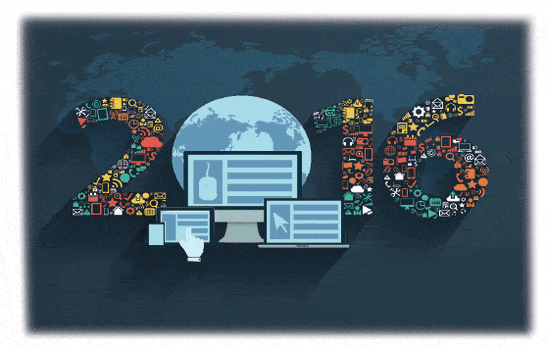
A few years ago, if an IT vendor approached an SME owner soliciting for a new technology product, he might have considered himself lucky if the customer agreed to transform even a part of his IT infrastructure to adopt that new technology. There was good reason for this indifference as apart from driving some fundamental changes to the IT infrastructure, transformation meant parting away with good sums of money from the limited IT budgets. So while people have always wanted to adopt the latest in technology, they also want it to be more relevant to their needs and be seen to deliver the best RoI.
The scenario has changed over the years with technology transformation happening primarily at the backend over the Cloud and with more mobile IT solutions available. So, organisations today are not required to make fundamental changes to their IT infrastructure in order to embrace new tech. However, there are IT domains that have been impacted more by tech advancements, especially with the consumerisation of IT than others and it is these very domains that are likely to witness ready acceptance by SMEs in the coming future. We discuss such technologies and explain why it makes sense for SMEs to embrace them. We also present expert advice from key IT decision makers in the SME space and discuss how they plan to transform their IT infrastructure in the coming months.
Affordable Analytics with Big Data as a Service
Immense amount of unstructured data is generated on a regular basis which can be analysed by predictive analytics skills provided by an outside company to manage and assess large data sets. This not only saves the SMEs from hiring in-house staff but also unlocks their resources. BDaaS as a managed service is similar to Software as a Service and relies upon cloud storage to preserve data access for the organization. Sophisticated tech solutions are now much cheaper than they used to be, and are rapidly moving towards a “pay per use” model.
BDaaS is equally helpful in sales and marketing and businesses are already using analytics in marketing through Custom Dimensions, a feature in Google Analytics. This feature allows businesses to capture information about the people visiting its sites, giving insight into their age, gender, and relationship status.
Cloud as the backbone of ready-to-access technology
The hardware and software infrastructure for private, public or hybrid clouds is already available. Services like Software as a service (SaaS), Infrastructure as a service (IaaS), or platform as a service (PaaS) are being used by enterprises world over to enhance operational quality. In 2016, the adoption of cloud computing will drift down from the large corporate segment into small businesses, making operations more efficient and reducing capital spending.
Microsoft has already announced the availability of Microsoft Azure services via local data center regions in India. Its open and flexible nature allows customers to host a range of operating systems, use any data base or development platform and deliver services to end users using any PC or any mobile device. Azure also provides first-class support for Java, Node.js, Python, Ruby, and PHP, and Microsoft Azure is certified to host SAP environments.
There is a platform called CloudGarage which caters to the specific business requirements of each organization. Their usage model is based on Pay-As-You-Go and enterprise data can be accessed and managed from anywhere around the globe. They also allow an enterprise to choose their specifications with multiple layers of security to ensure safety and integrity of data, application and IP.
Hybrid cloud: Security with flexibility
In the hybrid cloud domain, the solutions provide the flexibility and affordability of the public cloud with the security of a private cloud. This combo of public and private model really packs a punch thereby making it particularly appealing to SMEs. A hybrid strategy is also more flexible and allows an enterprise to achieve greater server usage at affordable costs with all the sensitive data stored on private servers.
IoT for SMEs
IoT applications can streamline supply chains, enhance customer insight and can manage energy consumption. Small-and medium-sized enterprises must learn to exploit the Internet of Things to make their businesses more responsive to customer needs. IoT presents an opportunity to measure, collect and analyse different variety of behavioural statistics, trends and actions that has the potential to allow businesses to better target their marketing along with overall operational control.
Manufacturing SMEs can use IoT for their logistic and planning process as they carry a huge amount of past data and with all this new information they can not only reduce their inventory costs but also the amount of capital required. Of course there are many challenges, including cost and the quality of human capital involved.
New Freemium Mobile Services
With falling tech costs and developments in mobile and cloud, big vendors are offering many freemium models dedicated primarily towards small enterprises. Google My Business mobile app aims to bring 20 million Small and Medium Enterprises (SMEs) in India online by 2017. This app helps SMEs create and manage their business information online across Google in English and Hindi for free, without having to invest in a website or a domain. In the last five months of the pilot phase, over a million SMEs have already signed up for this service. Similarly, Microsoft has also launched its cloud adoption program for small and medium businesses in India under the Cloud Solution Providers (CSP) model. Recently, Infosys and GE joined hands for developing new Internet of Things solutions that will help manufacturers and other industrial enterprises to improve asset efficiency and build more intelligent linkages between design, production and field testing.
/pcq/media/agency_attachments/L8pkS8gpnodJThOdAfv1.jpg)
 Follow Us
Follow Us